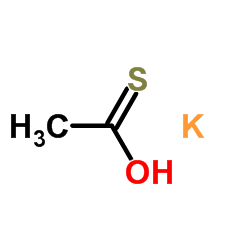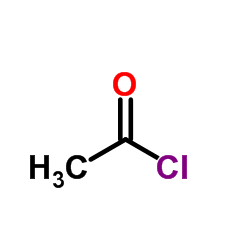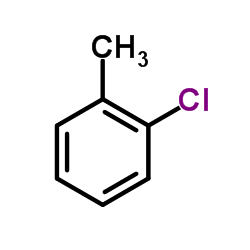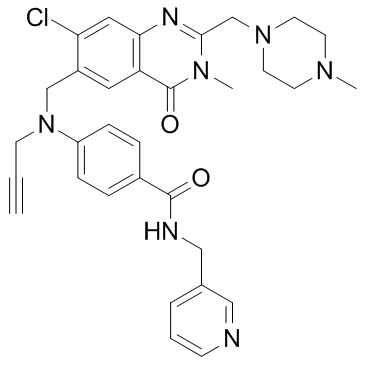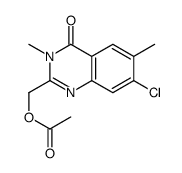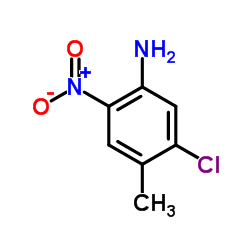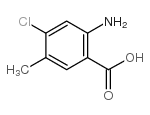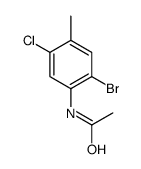7149-79-3
| Name | N-(3-chloro-4-methylphenyl)acetamide |
|---|---|
| Synonyms |
Essigsaeure-(3-chlor-4-methyl-anilid)
3-CHLORO-4-METHYLACETANILIDE Acetamide,N-(3-chloro-4-methylphenyl) 3-Chloro-4-acetotoluidide PRC-698 N-acetyl-3-chloro-p-toluidine DRC-2698 3'-Chloro-p-acetotoluidide 4-acetamido-2-chlorotoluene 2-chloro-4-acetotoluidide o-Chloro-p-acetotoluidide acetic acid-(3-chloro-4-methyl-anilide) p-ACETOTOLUIDIDE,3'-CHLORO 2-Chlor-4-acetamino-toluol EINECS 230-483-5 4-(Acetylamino)-2-chlorotoluene |
| Density | 1.218g/cm3 |
|---|---|
| Boiling Point | 333.3ºC at 760mmHg |
| Melting Point | 105-107ºC |
| Molecular Formula | C9H10ClNO |
| Molecular Weight | 183.63500 |
| Flash Point | 155.4ºC |
| Exact Mass | 183.04500 |
| PSA | 29.10000 |
| LogP | 2.67980 |
| Index of Refraction | 1.581 |
Synonym:3-Chloro-4-methylacetanilide3'-Chloro-p-acetotolouid Section 2 - COMPOSITION, INFORMATION ON INGREDIENTS
Risk Phrases: 22 36/37/38 Section 3 - HAZARDS IDENTIFICATION EMERGENCY OVERVIEW
Harmful if swallowed. Irritating to eyes, respiratory system and skin. Potential Health Effects Eye: Causes eye irritation. Skin: Causes skin irritation. May be harmful if absorbed through the skin. Ingestion: Harmful if swallowed. May cause irritation of the digestive tract. Inhalation: Causes respiratory tract irritation. May be harmful if inhaled. Chronic: Not available. Section 4 - FIRST AID MEASURES Eyes: Flush eyes with plenty of water for at least 15 minutes, occasionally lifting the upper and lower eyelids. Get medical aid. Skin: Get medical aid. Flush skin with plenty of water for at least 15 minutes while removing contaminated clothing and shoes. Ingestion: Get medical aid. Wash mouth out with water. Inhalation: Remove from exposure and move to fresh air immediately. If not breathing, give artificial respiration. If breathing is difficult, give oxygen. Get medical aid. Notes to Physician: Treat symptomatically and supportively. Section 5 - FIRE FIGHTING MEASURES General Information: As in any fire, wear a self-contained breathing apparatus in pressure-demand, MSHA/NIOSH (approved or equivalent), and full protective gear. Extinguishing Media: Use water spray, dry chemical, carbon dioxide, or chemical foam. Section 6 - ACCIDENTAL RELEASE MEASURES General Information: Use proper personal protective equipment as indicated in Section 8. Spills/Leaks: Vacuum or sweep up material and place into a suitable disposal container. Section 7 - HANDLING and STORAGE Handling: Avoid breathing dust, vapor, mist, or gas. Avoid contact with skin and eyes. Storage: Store in a cool, dry place. Store in a tightly closed container. Section 8 - EXPOSURE CONTROLS, PERSONAL PROTECTION Engineering Controls: Facilities storing or utilizing this material should be equipped with an eyewash facility and a safety shower. Use adequate ventilation to keep airborne concentrations low. Exposure Limits CAS# 7149-79-3: Personal Protective Equipment Eyes: Not available. Skin: Wear appropriate protective gloves to prevent skin exposure. Clothing: Wear appropriate protective clothing to prevent skin exposure. Respirators: Follow the OSHA respirator regulations found in 29 CFR 1910.134 or European Standard EN 149. Use a NIOSH/MSHA or European Standard EN 149 approved respirator if exposure limits are exceeded or if irritation or other symptoms are experienced. Section 9 - PHYSICAL AND CHEMICAL PROPERTIES Physical State: Solid Color: white Odor: Not available. pH: Not available. Vapor Pressure: Not available. Viscosity: Not available. Boiling Point: Not available. Freezing/Melting Point: 105 - 107 deg C Autoignition Temperature: Not available. Flash Point: Not available. Explosion Limits, lower: Not available. Explosion Limits, upper: Not available. Decomposition Temperature: Solubility in water: Specific Gravity/Density: Molecular Formula: C9H10ClNO Molecular Weight: 184 Section 10 - STABILITY AND REACTIVITY Chemical Stability: Not available. Conditions to Avoid: Incompatible materials. Incompatibilities with Other Materials: Acids, bases, oxidizing agents. Hazardous Decomposition Products: Hydrogen chloride, chlorine, nitrogen oxides, carbon monoxide, carbon dioxide. Hazardous Polymerization: Has not been reported Section 11 - TOXICOLOGICAL INFORMATION RTECS#: CAS# 7149-79-3: AN3325000 LD50/LC50: Not available. Carcinogenicity: N1-(3-Chloro-4-methylphenyl)acetamide - Not listed by ACGIH, IARC, or NTP. Other: See actual entry in RTECS for complete information. Section 12 - ECOLOGICAL INFORMATION Section 13 - DISPOSAL CONSIDERATIONS Dispose of in a manner consistent with federal, state, and local regulations. Section 14 - TRANSPORT INFORMATION IATA No information available. IMO No information available. RID/ADR No information available. Section 15 - REGULATORY INFORMATION European/International Regulations European Labeling in Accordance with EC Directives Hazard Symbols: XN Risk Phrases: R 22 Harmful if swallowed. R 36/37/38 Irritating to eyes, respiratory system and skin. Safety Phrases: S 26 In case of contact with eyes, rinse immediately with plenty of water and seek medical advice. S 37/39 Wear suitable gloves and eye/face protection. WGK (Water Danger/Protection) CAS# 7149-79-3: No information available. Canada CAS# 7149-79-3 is listed on Canada's NDSL List. CAS# 7149-79-3 is not listed on Canada's Ingredient Disclosure List. US FEDERAL TSCA CAS# 7149-79-3 is listed on the TSCA inventory. SECTION 16 - ADDITIONAL INFORMATION N/A |
CHEMICAL IDENTIFICATION
HEALTH HAZARD DATAACUTE TOXICITY DATA
|
| Risk Phrases | 25 |
|---|---|
| Safety Phrases | S20;S36;S45;S60 |
| RIDADR | UN 2811 |
| RTECS | AN3325000 |
| Packaging Group | III |
|
~87% 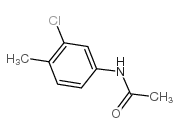
7149-79-3 |
| Literature: Cancer Research Technology Limited Patent: US6699861 B1, 2004 ; Location in patent: Page column 14 ; US 6699861 B1 |
|
~87% 
7149-79-3 |
| Literature: THE TEXAS A and M UNIVERSITY SYSTEM Patent: WO2006/23763 A1, 2006 ; Location in patent: Page/Page column 12; 13 ; |
|
~% 
7149-79-3 |
| Literature: Recueil des Travaux Chimiques des Pays-Bas, , vol. 32, p. 247 |
|
~% 
7149-79-3 |
| Literature: Environmental Toxicology and Chemistry, , vol. 15, # 10 p. 1655 - 1663 |
|
~% 
7149-79-3 |
| Literature: Recueil des Travaux Chimiques des Pays-Bas, , vol. 32, p. 247 |
|
~% 
7149-79-3 |
| Literature: Journal of the Chemical Society, , p. 2903 |
|
~% 
7149-79-3 |
| Literature: Chem. News J. Ind. Sci., , vol. 72, p. 58 Chem. Zentralbl., , vol. 66, # II p. 530 |
|
~% 
7149-79-3 |
| Literature: Journal of the Chemical Society, , p. 2903 |
| Precursor 8 | |
|---|---|
| DownStream 10 | |



